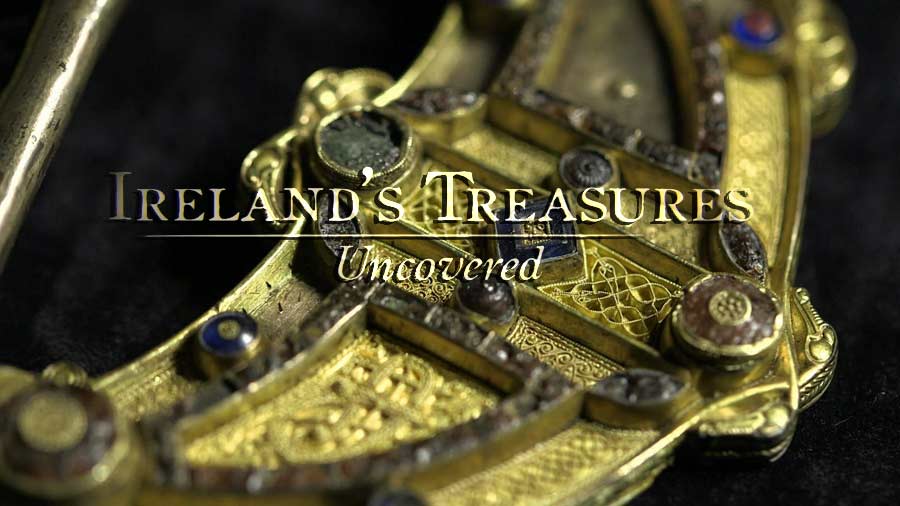Ireland’s Treasures Uncovered: The story of the iconic Irish artefacts that have helped to shape and create modern Ireland, both north and south.
The programme reveals the surprising tales behind treasures such as the Tara Brooch, the Broighter Hoard, the Waterford Charter Roll and others, revealing new stories behind the artefacts that we thought we knew. It also reveals the most recent astounding finds that are adding to the list of Ireland’s Treasures.
Using key access to Ireland’s two largest museums, in Belfast and Dublin, the programme brings together archaeologists and curators who have spent their lives working to understand the true context for these emblematic treasures.
Ireland’s Treasures Uncovered
Tara Brooch
The Tara Brooch is a Celtic brooch of the pseudo-penannular type, made in 650 to 750 AD. It was found in Ireland in 1850, but, despite its name, not at Tara but likely near Bettystown on the coast of County Meath. The name by which it became known was attached to the brooch by the jeweller who purchased it, as a marketing ploy for the copies they made. The brooch was exhibited internationally and was one of the artifacts that fuelled the Celtic Revival in the mid-19th century. It is now on display in the National Museum of Ireland in Dublin.
The National Museum of Ireland describes it as follows: “…The Tara Brooch can be considered to represent the pinnacle of early medieval Irish metalworkers’ achievement. Each individual element of decoration is executed perfectly and the range of technique represented on such a small object is astounding.”
Broighter Gold
The Broighter Gold or more correctly, the Broighter Hoard, is a hoard of gold artefacts from the Iron Age of the 1st century BC that were found in 1896 by Tom Nicholl and James Morrow on farmland near Limavady, in the north of Ireland (now Northern Ireland). The hoard includes a 7-inch-long (18 cm) gold boat, a gold torc and bowl and some other jewellery. A design from the hoard has been used as an image on the 1996 issue of the Northern Ireland British one-pound coins and the gold ship featured in a design on the last Irish commemorative one-pound coins.
The Broighter Collar and Broighter Ship also featured on definitive postage stamps of Ireland from 1990–1995. The National Museum of Ireland, who now hold the hoard, describe the torc as the “finest example of Irish La Tène goldworking”. Replicas of the collection are kept at the Ulster Museum in Belfast.
Waterford Charter Roll
Waterford Charter Roll is a historic legal document. It was created by the Anglo-Norman people of Waterford in the 14th Century and its story shows us the power of English kings in Ireland through the medieval period to the 19th Century. Waterford Charter Roll is 4m long and there are 17 individual drawings on the Roll.
It is dated to 1372/3 and is housed in the Waterford Museum of Treasures. It contains the earliest depiction of an Irish city from a time when Waterford wanted to maintain its status as the prominent trade city on the island of Ireland, particularly over neighbour New Ross.
Waterford was designated a Royal port by Henry II and therefore could levy tolls. In a bid to gain favour with Edward III over New Ross, the Roll was drawn up in a pictorial and colourful style showing that the city had had relationships with kings going back centuries, kings that were ancestors of Edward. The king was persuaded by the Roll and reinstated Waterford’s monopoly as a Royal port.




